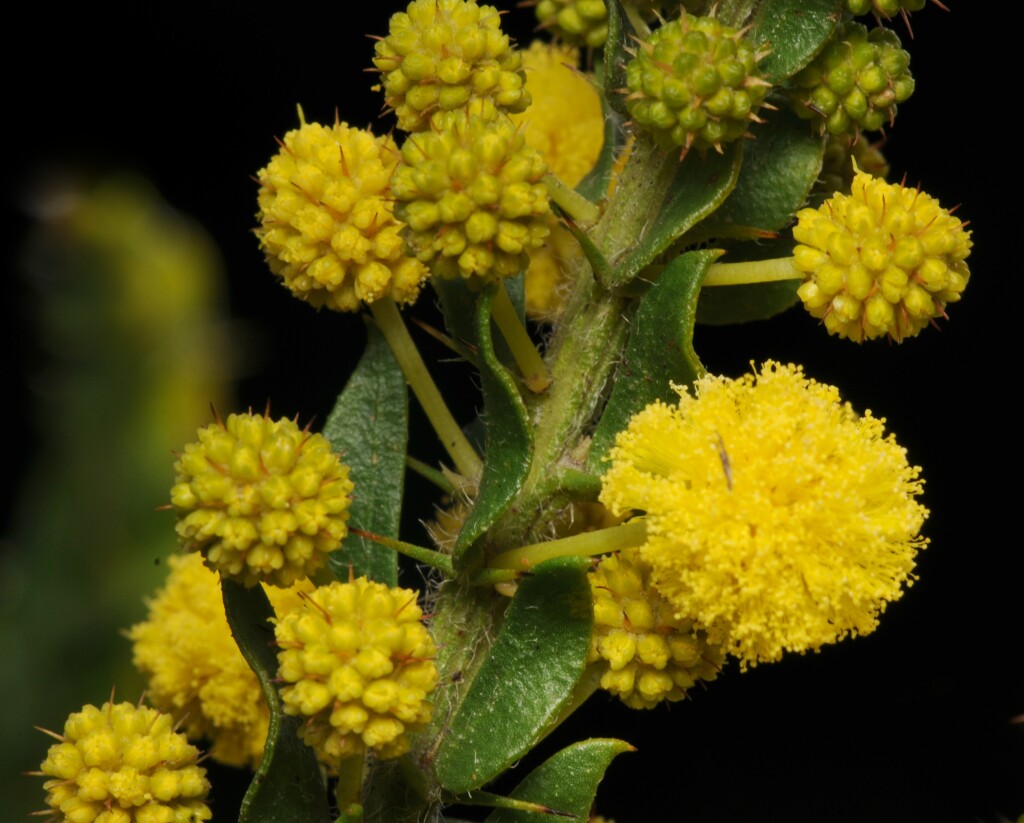Acacia paradoxa
DC. Prickly WattleStraggly to dense, intricate shrub or tree, usually 2–4 m high, branches often down-arched; branchlets ribbed, indumentum variable, sometimes glabrous. Phyllodes erect, asymmetric, usually lanceolate, sometimes narrowly oblong-elliptic, 0.8–3.0 cm long, usually 2–7 mm wide, glabrous to sparsely hairy, abaxial margin usually undulate, acute or obtuse, with oblique, pungent mucro; midrib usually off-centre; stipules spinose, spreading, 4–12 mm long. Peduncles usually 1 per axil, 5–15 mm long, usually glabrous; heads globular, to c. 12 mm diam., densely 30–50-flowered, golden; bracteoles frequently acuminate. Flowers 5-merous; sepals united. Pods linear to narrowly oblong, to 6 cm long, 3–5 mm wide, thinly coriaceous, usually densely hairy; seeds longitudinal, oblong, 3.5–5 mm long, shiny, dark brown, funicle arillate. Flowers Aug.–Nov.
LoM, MuM, Wim, GleP, VVP, VRiv, MuF, GipP, OtP, WaP, Gold, CVU, GGr, DunT, NIS, EGL, EGU, HSF, HNF, OtR, Strz, VAlp. Also SA, Qld, NSW, ACT(?native); naturalised in Tas. and probably WA. Widespread throughout much of Victoria but absent from the north-west and (except for one report) from the far east, usually in woodland or open forest.
Very polymorphic especially with respect to indumentum morphology and density, phyllode shape and degree of undulation, and bracteole lamina shape. The circumscription of taxa within and about A. paradoxa is further complicated by the putative hybrids recorded between it and a number of other species, especially those belonging to the A. verniciflua complex. In Victoria it is thought to hybridize with A. ausfeldii, A. stictophylla, A. stricta and A. verniciflua. These presumed hybrids combine the characters of their respective parents and possess more or less setaceous stipules 3-5 mm long.
Commonly planted and becoming established outside its natural range. Proclaimed a noxious plant in parts of the State.
Entwisle, T.J.; Maslin, B.R.; Cowan, R.S.; Court, A.B. (1996). Mimosaceae. In: Walsh, N.G.; Entwisle, T.J., Flora of Victoria Vol. 3, Dicotyledons Winteraceae to Myrtaceae, pp. 585–658. Inkata Press, Melbourne.
 Spinning
Spinning




